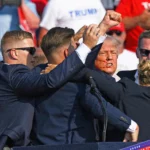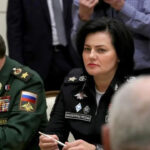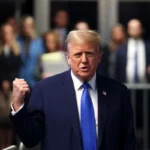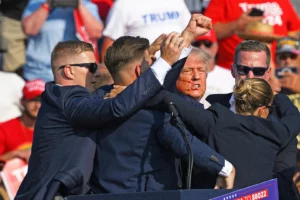Toronto, Atlanta (10/11 – 50)
As recently as the early 1980s, central bankers around the world could be heard moaning and groaning about having to hold physical gold reserves to back up their currencies. The trouble, expense and potential loss of picturesque cast metal in a world of infinite fiat money and digital bytes reflecting off satellites. It’s a trend: citizens would be amazed to learn that only around 8% of the money working as the lifeblood of economies around the world is in the form of coins and banknotes. Folding money is considered old-fashioned.
A banker might roll his eyes and joke to a colleague: “Imagine, we are continuing to pay out good money to pile up these shiny precious metal ingots in a vault, with armed guards. What is this, the Roman Empire?”
You do not hear that in the new Millennium. Disparagement of gold bullion has quieted, in an age of terrifying global debt overhang and failing trust in eqforeign counterparts and fiat currencies. As the world’s economies glide past an estimated one quadrillion dollars in debt instruments, and inflation eats away at everyone’s assets (but not those of the gold bugs and their holdings, notably, as gold, as recently as the 1970s going for US$ 32/oz., zips past US$ 2,000) the usefulness and credibility of the so-called “petrodollar” look increasingly unappetizing.
This would have been unthinkable had it not been for the foundation of the BRICS Group of nations. Its most unlikely beginning was with avaricious Goldman Sachs – of all people – who proposed a grouping of China, India and Russia, in mutual economic interest, pointedly excluding the USA, the “center of everything” since the end of World War II in 1945.
Hu Jintao, Manmohan Singh and Vladimir Putin got together on the sidelines of the 2008 Group of 8 (G8) meeting in St. Petersburg. Russia, now blackballed because of its “Special Military Operation” in Ukraine, was a G8 member, while India and China attended the gathering as part of a purported G8 “outreach” to emerging economies.
In 2009, the first summit of “BRICs” countries (excluding South Africa) took place in Russia. In 2010, at a foreign ministers’ meeting, the initial four agreed to invite South Africa, a formidable economic power on the continent.
By 2011, now a five-country organization—with the “S” now standing for South Africa— formed up, mostly in aversion to the increasingly inconvenient burden of dealing in dollars. Joining together with a BRIC Currency could alleviate the heavy burden incurred by US dollar-denominated debt, in a zero-sum game, always favoring the wealthy western economies: interest rates soared, as the US Fed struggled against inflation.
About this time, certain countries quietly started selling their USD reserves and stowing away tons of shiny gold bars. Note that it was not simply the “mavericks” who did not care for the damage inflicted on their economies by the Fed: the Finance Minister of Norway, never thought of as “anti-American” nation, publicly belly-ached about having to sell his country’s precious hydrocarbon reserves in dollars.
The other alarming factor was the lethal weaponization of the dollar. With the ignominious ouster of the Shah of Iran and the subsequent hostage crisis, billions of dollars of Iranian assets were “frozen” in the USA. When the Federal Republic of Germany went to reclaim their gold bullion from the Bank of New York they were first brushed off and later found many bars had been melted down and recast.
Around the planet, Uncle Sam began to be perceived as an unreliable, if not unscrupulous relative, who would turn on you and pocket your valuables if you did not behave his way. Whatever happened to Khaddafi’s tons of gold, spirited off by NATO pirates?
The buzzword was “dedollarization”. Appealing though the notion might be to those whose billions are locked away by Washington, it is worthwhile to pause and consider how much time went by and effort was expended in setting up the Euro. The EU, certified in 1957 by the “Luxemburg Treaty”, took a full forty-two years of hard work, before Maastricht was hammered out, in 1999.
The most recent BRICS Summit, hosted by President Cyril Ramaphosa of South Africa in August of this year, received endorsement from outliers like Algeria, Argentina, Bahrain, Bangladesh, Egypt, Indonesia, Iran and Saudi Arabia.
Member countries might be active in their economics, trade, and finance relationships, including payment protocol, but it is an unbalanced interdependence, pitting a behemoth like the PRC against, say, Argentina. An advanced economy cannot create a common currency with a primitive one, as one is too dependent on the other: interdependence implies balance. Politics alone won’t do the job.
Bear in mind that with all the grunting and shoving toward de-dollarization, currency trading in USD still constitutes 88 per cent of the total. Global reserves sit at 60 per cent in USD, 20 per cent in Euros and only 2 per cent in Renminbi. National debts are mostly in USD. It was amusing to watch Argentina hurriedly swap their Renminbi, disbursed after a recent large purchase from the PRC, for billions of dollars.
ASEAN gave it a shot, looking to set up the “Asian Currency Unit” (ACU); that yielded nothing, except for a convenient swap facility, eventually known as “Local Currency Settlements” (LCS), still functioning as of this writing.
















